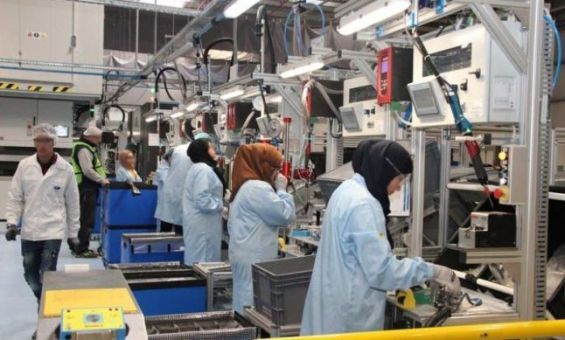Morocco's firm density has increased significantly in recent years, according to a World Bank note assessing the country's private sector and analyzing firm dynamics and productivity.
Published on Tuesday, October 15, the World Bank highlights that the rise in firm density within the Moroccan private sector is due to a high rate of new business entries and dynamic entrepreneurship. This is combined with an «unusually low de jure exit rate», according to the note.
Explaining the evolution of formal firm density, the World Bank indicates that the survival rate of businesses after five years is estimated at 53%, while the official deregistration exit rate is only 1.2%. The World Bank, relying on data from the Observatory of Very Small, Small, and Medium Enterprises (OMTPME), also notes that the de facto exit rate—referring to firms that remain inactive for at least two years without formally closing—is unusually high, at 7.3%.
The findings further suggest that while Moroccan entrepreneurs do not face excessive constraints when starting a new business, they are often reluctant to formally close their firms due to costly bankruptcy and liquidation procedures.
Most formal firms in Morocco are microenterprises
The note also observes that most formal firms in Morocco are microenterprises with 10 or fewer employees, contributing nearly 86% of employment in the country. This is significant compared to the average of 35% in countries of the Organisation for Economic Co-operation and Development (OECD).
While these small firms contribute substantially to employment, they grow slowly compared to larger firms. «The average size of all firms that have been in business for no more than 10 years is below 10 employees, and the average size of mature firms (those operating for more than 10 years) is only 26 employees», the World Bank noted.
Additionally, the note highlights Morocco's low density of high-growth firms (HGFs), which are essential for job creation and economic growth. This low density contributes to insufficient job creation, and the emergence of new entrants, including recent graduates, has not significantly increased the number of HGFs. The challenge of creating new high-growth firms is partly due to sectoral dynamics and the broader economic environment.
Productivity, employment and growth
Regarding the productivity of Morocco's formal private sector, the World Bank stresses that it has been lower than expected. «Firm-level data suggest that labor productivity in the Moroccan corporate sector has lagged behind that of the overall economy», the note reads. This may be attributed to factors such as the formalization of microenterprises and the overall performance of the corporate sector, which may have initially reduced average productivity due to the smaller size and lower efficiency of these firms.
The note emphasizes that Morocco must do more to sustain productivity gains in the private sector as part of its broader economic growth strategy. It also assesses Morocco's non-agricultural formal private sector, noting a shift towards services between 2016 and 2019, which contributed positively to labor productivity growth. However, prior to the COVID-19 pandemic, labor tended to shift towards less productive firms, indicating allocative inefficiencies. While the average productivity of Moroccan formal firms increased, these inefficiencies partially offset the gains.
Moreover, the life-cycle dynamics of Moroccan firms suggest market distortions, with older firms being larger but less productive than younger ones. Allocative inefficiencies appear more pronounced in the industrial sector compared to services, where labor reallocation towards more productive firms has contributed to productivity growth.
The World Bank's recommendations
The World Bank's note includes recommendations for improving the Moroccan private sector's performance. It suggests fostering conditions that allow all firms, especially small and medium-sized enterprises (SMEs), to grow and thrive.
This could be achieved by providing businesses with the resources they need to expand and ensuring productivity is rewarded through healthy competition. Additionally, reviewing size-based incentives, such as tax regimes and labor policies, could prevent businesses from staying small or informal, addressing inefficiencies in the market.
Another key recommendation is to facilitate the exit of inactive firms, preventing economic inefficiencies caused by companies that cease operations without formally closing. Streamlined bankruptcy and business closure procedures would ease the burden on entrepreneurs.
Furthermore, while Morocco has traditionally focused on manufacturing, the services sector remains the primary driver of productivity growth. By leveraging technology and connectivity, Morocco can harness the potential of this sector to create jobs and further boost economic growth.





 chargement...
chargement...













